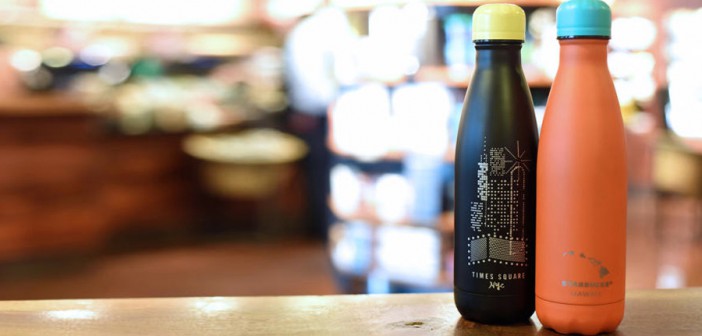How S’well Designed Its Way Into 3,300 Starbucks Stores
Anyone who makes a product wants to get it in front of the eyes of as many people as possible. It’s why product makers cozy up to retailers, hoping to secure just a few inches of precious shelf space to show their wares in front of the store’s foot traffic. Retailers, in turn, are looking for products that stand out, that scream “Pick me up! Buy me!” On today’s shelves fashion and design matter more than ever. Given that, you can imagine how hard it could be for a product like the humble water bottle to attract attention.
That’s just the challenge Sarah Kauss was facing in 2010 when she founded S’well, maker of the fashionable utilitarian water bottle that’s since captivated the minds of fashionistas, the eco-conscious, and big brands the world over.
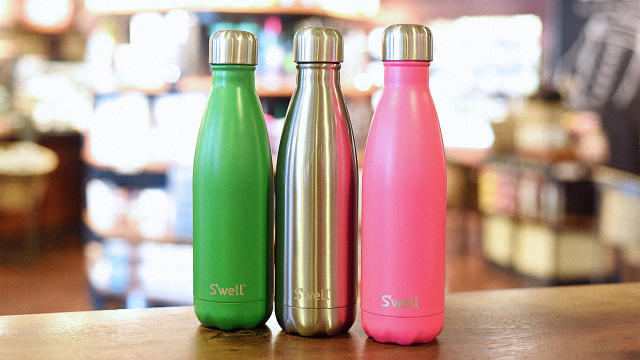
“Design has been important for S’well because it has set us apart from other water bottles on the market,” says Kauss. “Before S’well was created, I used to carry another bottle with me and I looked silly bringing it into the boardroom. I knew I wanted to create something that was sleeker, but still had the functionality I was looking for.”
But Kauss, who founded the company with $30,000 of her own money, didn’t create S’well simply to make prettier water bottles. The genesis of S’well lay in her desire to do something to help tac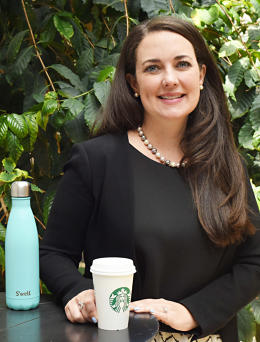 kle the disastrous effects of plastic bottled water on the environment. It was a cause she first became interested in after attending a panel about the global clean-water crisis at her alma mater, Harvard Business School, in 2009.
kle the disastrous effects of plastic bottled water on the environment. It was a cause she first became interested in after attending a panel about the global clean-water crisis at her alma mater, Harvard Business School, in 2009.
“Using plastic bottles is not only bad for the planet, but the water consumed in plastic bottles is oftentimes not as pure as municipal tap,” says Kauss. “Bottled water in the U.S. is regulated by the FDA, where tap water is regulated by the EPA, which has higher standards for ensuring that bacterial and toxic chemicals are not in the water source. So it seems odd to think that we pay 2,000 times more for bottled water than tap, when the water isn’t as pure as tap and the plastic bottles it comes in is bad for us and our planet.”
“DESIGN HAS BEEN IMPORTANT FOR S’WELL BECAUSE IT HAS SET US APART FROM OTHER WATER BOTTLES ON THE MARKET.”
Kauss knew that in order to get people to rely less on bottled water you would need to convince them to carry around a reusable bottle. But how do you get people to want to carry a boring and cumbersome item around with them? You make it beautiful through design.
The S’well bottle best resembles a milk bottle made from 18/8 double-walled stainless steel with a matching cap. Its mouth is big enough to fit ice cubes through and its base is narrow enough to fit in standard cupholders—things plastic bottles or most traditional reusable bottles don’t allow for. S’well‘s unique form isn’t its only selling point. Style is also its USP. S’well bottles have come in over 93 different colors, textures, and patterns to date. The variety of styles is enough to appeal to the differing tastes of a growing group of people whose idea of personal fashion encompasses not just the clothes on their body, but the accessories they carry with them.
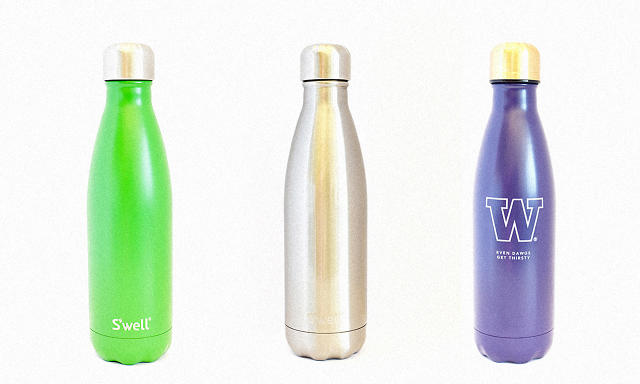
“By using a S’well, you’re choosing an alternative to a single-use plastic bottle. They’re non-leaching, non-toxic, and double insulated, which keeps liquids cold for 24 hours and hot for 12 hours. And of course,” adds Kauss, “they’re not only functional, but fashionable.”
It was that first fashionable design—the original S’well bottle came in only one color, Ocean Blue—that was enough to capture the fascination of O, the Oprah Magazine, which put it on its chic “O List.” After that, other brands and retailers came calling.
And then came Starbucks. This past August the world’s largest coffee chain, which also sells kitchenware and coffee makers, announced that it would be carrying an exclusive line of S’well bottles in its 3,300 retail locations across the country.
Having your product in 3,300 of any company’s stores would be enough to make anyone happy, but when that store is Starbucks it’s even better. Not only do Starbucks stores feature some of the highest foot traffic of any retailers, their customers frequently return two or three times in a single day. That means the same individual is potentially exposed to the products Starbucks chooses to carry multiple times a day. That amount of exposure creates a brand awareness and recognition unmatched by other big box retailers, whose customers usually only visit a few times a month.
S’well’s Starbucks coup isn’t something that happened overnight. It was several years in the making, says Kauss.
“We got a call from Starbucks back in 2012 and they told us that they saw S’well in a magazine, loved the look, and wanted us to come to Seattle to share our story,” remembers Kauss. She traveled to Seattle and met with some of the chain’s buyers. “I remember feeling really excited that even as a small company S’well was being noticed, but still a bit nervous about working with a global brand.”
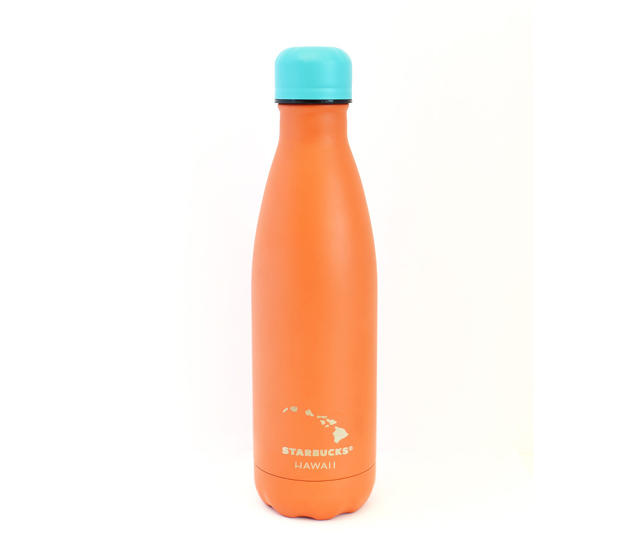
As for what attracted Starbucks to S’well, Kauss says that in addition to the bottle’s functionality and fashion appeal, the coffee chain identified with S’well’s message to rid the world of plastic bottles. As water is one of the coffee chain’s main ingredients in its drinks, Starbucks has taken a growing interest in water conservation efforts in recent years—announcing in 2008 that is was working to reduce water consumption in its stores by 25% by the end of this year.
Following Kauss’ first meeting with Starbucks, in 2013 the coffee giant agreed to put S’well bottles in 120 of its stores in Atlanta and Austin. All locations sold out without any promotion.
After the success in Georgia and Texas Starbucks came to S’well again to work on creating an exclusive design for its Hawaii stores. That was followed by a S’well signature New York Times Square collection exclusive to the Starbucks store in Times Square earlier this year. And now, both companies have decided to go all-in, working together on designing three 17-ounce bottles in unique colors that will be in every Starbucks in the country.
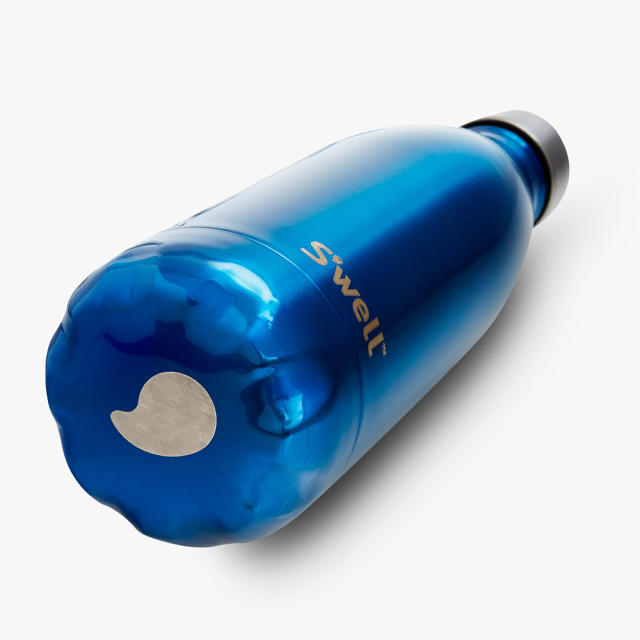
“The Starbucks team is highly engaged and inspired and it was a collaborative effort between both of our creative teams to land on the designs,” says Kauss when I ask her what it was like designing the bottles hand in hand with the coffee giant. “We worked together to create the colored caps and specific design elements for the bottles, finding what would be the most adored or collected by our fans.”
“It was exhilarating working with a group of such visionaries,” says Kauss.
While it’s obvious the Starbucks deal is a big win for S’well, it’s important to note that Kauss just won’t take any deal that comes her way. In the past she’s turned down a major food chain that didn’t sync with the values S’well holds dear.
“S’well’s mission is simple, giving back and taking care of our planet,” says Kauss. “With that said, we look to align with other brands that share similar philosophies.”
And that mission—one that was born from conservation and implemented through design—has paid off. Kauss says that thanks to the Starbucks deal and the other brands S’well has chosen to work with the company is expected to grow 400% in 2015.
With the success of S’well‘s water bottle firmly established, might Kauss now take her increasing fortunes and design bravado and tackle other “boring” products in need of a stylish makeover?
“We have new colors, designs, collaborations, and additional products in the pipeline,” is all Kauss will offer for now. “Stay tuned!”

